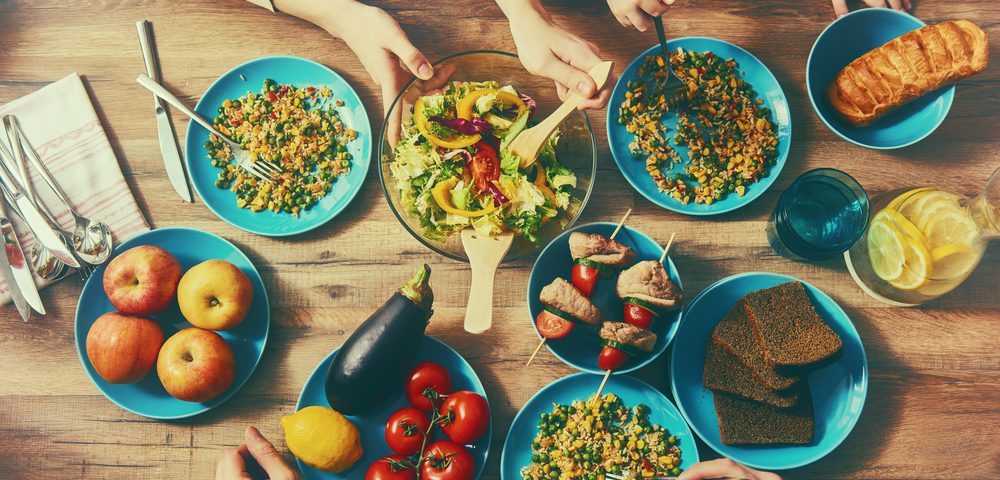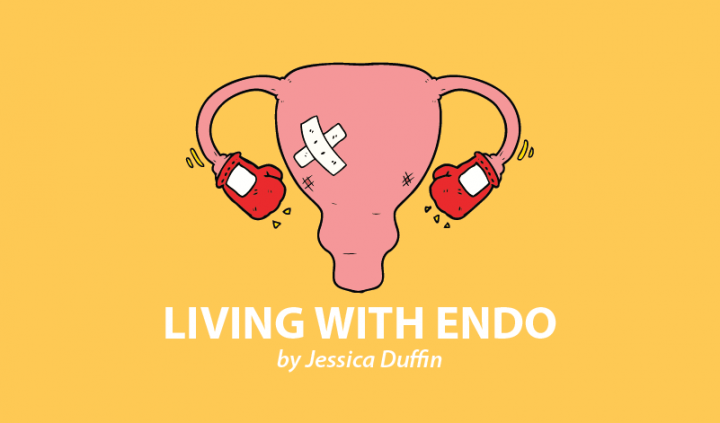Dinner. It’s potentially my favorite meal of the day (it often competes with brunch), but no other mealtime causes so much stress or complication. Pinterest and YouTube are full of quick dinner recipes, you can find endless “dinner hacks for busy people” on Google, and many of us are turning to dinner delivery services to ensure we get both free time and a healthy meal in the evenings.
Perfecting my dinner routine and go-to options has taken time, so don’t be hard on yourself if meals take longer than you expect, or you end up buying some ready-made meals one night (just choose wisely!). My No. 1 tip is, as you find successful meals you (and maybe your family or your partner) like, note them down, so you remember them for the future. My loved ones and I have created so many great meals, but we then forget about them and have been left in the supermarket stuck for inspiration as we stare at vegetables.
Eating for endometriosis relief really doesn’t have to be boring. I now eat the best meals and food of my life since going down this path — there’s so much to discover and experiment with. Rather than going into a deep explanation of the meals I eat, I’ve provided a general list of some of my favorites. Previously, I ate pretty heavy meals in the evening, which you can probably guess from the list below. This was my biggest meal of the day, but since working on my blood sugar and hormone balancing, lunch is now the largest, and though it’s taken some rejigging, I feel much more energized.
So, while the following are still my favorites and a great way to get started, I do lighten these meals up and avoid adding grains to them in the evening to stick to the nutrition path I’m on. I’ve added alternative options if you are also balancing your blood sugar in this way. (I am not a nutritionist, rather I am following the Flo Living protocol by Alisa Vitti, so please refer to an expert for further information.) Another thing to note is that while I’ve provided the staple meals below, they’re usually accompanied by some kind of vegetables and always a side of leafy greens.
Weekday meals
- Stuffed butternut squash, eggplant, or pepper with beans, pulses, or lentils, and rice or quinoa (or you could replace grains with cauliflower rice)
- Jackfruit or black bean tacos (I love blue corn tortillas or sweet gem lettuce leaves!)
- Jerk jackfruit curry or jerk gluten-free wraps
- Cauliflower steaks with salad and hummus
- Cauliflower buffalo wings, refried black beans, and spiced sweet potato
- Rice noodle stir-fry (or you could use bean- or lentil-based noodles, or cauliflower rice)
- Roasted carrot, orange, beetroot, and walnut salad with rocket and baby spinach
- Roasted vegetable salad with lemony green beans
- Falafel salad
- Lentil Bolognese with rice or quinoa spaghetti
- Chickpea pasta with walnut or pine nut vegan pesto
- Lentil and sweet potato cottage pie (usually more of a winter meal)
- Kidney bean chili
- Chickpea curry with quinoa (or cauliflower rice)
- Red lentil dal
- Loaded sweet potatoes
Weekend meals
On the weekends, I will often go for a fun meal that might take more time to make or requires special ingredients.
- Black bean burger (or some kind of vegan soy-free burger)
- Chickpea flour pizza
- Nachos
- Cashew nut-based mac and cheese
I hope these ideas have given you some inspiration. You know the types of meals you like, so do some research. Try going onto Pinterest and adding in “healthy” before your favorite dish. If you know gluten or dairy worsen your endometriosis symptoms, you can search for gluten-free and vegan versions on the Internet, too. The “endometriosis diet” is mainly about reducing inflammation, so it will often involve removing inflammatory foods such as gluten, red meat, and refined sugar, plus upping good fats, vegetables, and whole grains. Anti-inflammatory meals are becoming more and more popular, so there are now plant-based and wheat-free recipes everywhere!
You don’t need recipes specifically tailored for endometriosis to support your body and reduce your symptoms. If you’re not sure what your triggers are or you haven’t heard about eating for endometriosis symptom relief, head over to my earlier column about the “endometriosis diet.”
Please remember that when it comes to endometriosis, there is no one-size-fits-all answer. We all have different symptoms and we all respond differently to treatment. There is science backing up particular foods worsening or reducing inflammation and pain, but that doesn’t mean it’s going to work 100 percent for you, or that the diet will be enough alone to support you to manage endometriosis. Eating for endometriosis is not about restricting foods; it’s about eating more good stuff, finding out what works for your body, and supporting it.
***
Note: Endometriosis News is strictly a news and information website about the disease. It does not provide medical advice, diagnosis, or treatment. This content is not intended to be a substitute for professional medical advice, diagnosis, or treatment. Always seek the advice of your physician or other qualified health provider with any questions you may have regarding a medical condition. Never disregard professional medical advice or delay in seeking it because of something you have read on this website. The opinions expressed in this column are not those of Endometriosis News or its parent company, BioNews Services, and are intended to spark discussion about issues pertaining to endometriosis.


